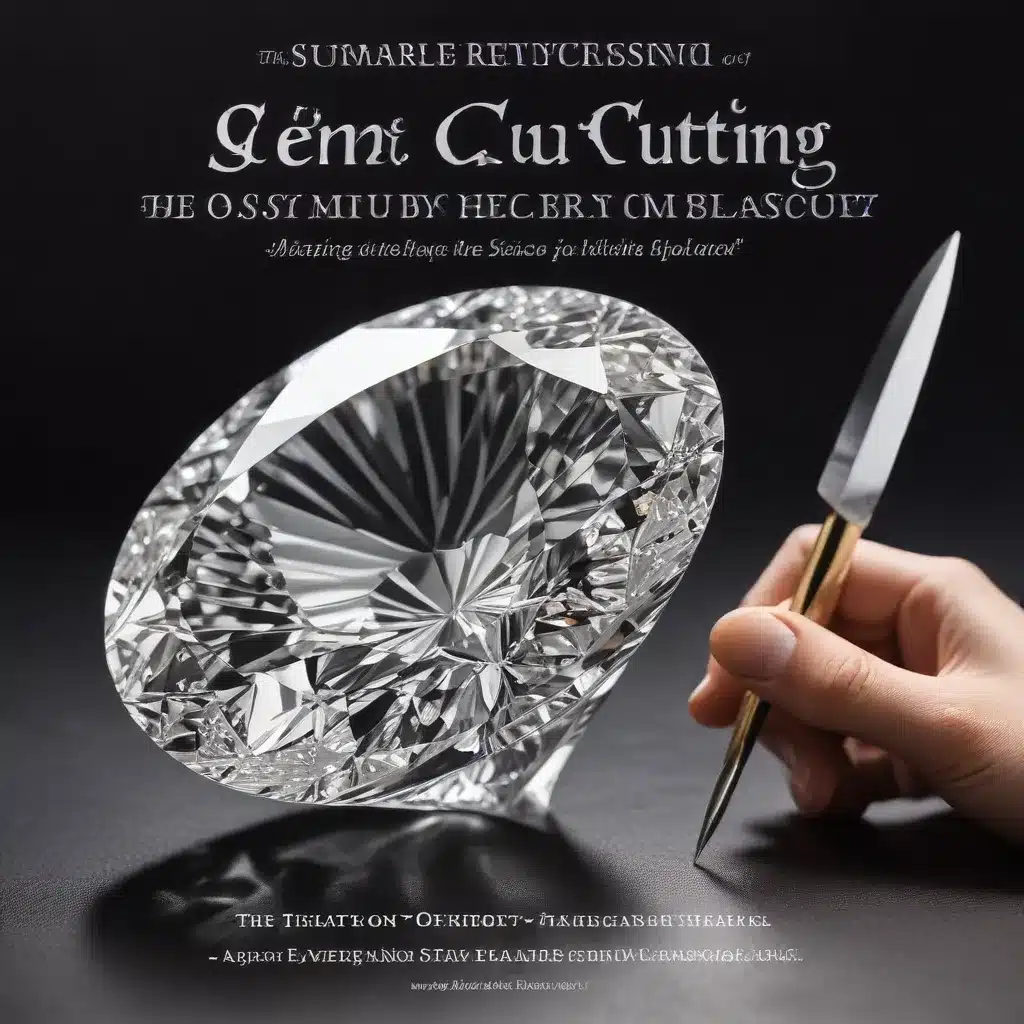
Gem cutting is an age-old craft that has evolved into a true art form, blending technical precision with imaginative design. From the masterful hands of skilled cutters emerge stones that captivate the eye and dazzle the senses. What may appear as a simple, unassuming rock is transformed through the cutting process into a breathtaking jewel, its inner brilliance unleashed for all to admire.
The Fundamental Principles of Gem Cutting
The History of Gemstone Cutting
Gemstone cutting has its roots in ancient times, with early civilizations recognizing the allure of polished and faceted stones. The Egyptians, Greeks, and Romans were pioneers in the art, developing techniques to enhance the natural beauty of gems. Over the centuries, the craft evolved, culminating in the 1400s when the first round brilliant cut was introduced, laying the foundation for modern gem cutting.
The Anatomy of a Gemstone
At the heart of any beautifully cut gem lies its internal structure. Gemstones are characterized by their refractive index, dispersion, and Mohs hardness – properties that determine how light interacts with the material and how it can be cut and polished. The cut of a gem is crucial, as it allows the stone to display its optimal brilliance, fire, and scintillation.
The Properties of Gemstones
Each type of gemstone possesses unique physical and optical properties that require specific cutting techniques. Diamonds, for example, with their high refractive index and dispersion, respond best to intricate faceting patterns that maximize their renowned sparkle. In contrast, softer gems like emeralds and rubies may require more delicate handling to retain their natural color and clarity.
The Art of Gem Cutting
Techniques in Gem Cutting
Gem cutting is a multifaceted art, with skilled cutters employing a variety of techniques to transform the rough material. Flat facets, the traditional approach, create a symmetrical, two-dimensional brilliance. Meanwhile, concave facets add depth and dimension, producing a mesmerizing, sculptural effect. The cutter’s choice of method depends on the desired aesthetic and the specific properties of the gemstone.
The Importance of Symmetry
Precise symmetry and proportions are the hallmarks of a masterfully cut gem. The angles and alignments of the facets must be meticulously calculated to ensure optimal light reflection and refraction, resulting in a stone that dazzles with its brilliance. The cutter’s keen eye and steady hand are essential in achieving this level of perfection.
Maximizing Brilliance
The ultimate goal of gem cutting is to maximize a stone’s brilliance, fire, and scintillation – the characteristics that captivate the eye and draw us in. Skilled cutters employ a range of techniques, from precisely angled facets to the strategic placement of table and crown, to harness the full potential of the gemstone’s inherent optical properties.
The Science of Gem Cutting
The Physics of Light Refraction
At the heart of gem cutting lies an understanding of the physics of light refraction. As light enters a gemstone, it is bent and scattered, creating the mesmerizing play of color and sparkle. Cutters leverage this phenomenon, carefully designing the facets to guide the light within the stone, ensuring it is reflected and refracted to its fullest potential.
The Role of Proportions
The proportions of a gemstone – its depth, table size, and crown height – play a crucial role in its appearance and brilliance. Skilled cutters meticulously calculate these measurements, balancing them to create the ideal conditions for light manipulation and optimal visual impact.
Innovative Cutting Styles
While the classic round brilliant cut remains a timeless favorite, modern gem cutting has seen the emergence of innovative styles that push the boundaries of traditional design. Fantasy cuts, spiral cuts, and scalloped cuts are just a few examples of the creative expressions that cutters have developed, each offering a unique take on the interplay of light and form.
Mastering the Craft of Gem Cutting
Understanding Cut Grading
The quality of a gem’s cut is a critical factor in determining its value and beauty. Grading systems, such as those established by the Gemological Institute of America (GIA), provide a standardized framework for evaluating the precision and proportions of a cut gem, allowing buyers to make informed decisions.
The Skill of the Cutter
Gem cutting is a true test of a cutter’s skill and artistry. It requires a deep understanding of gemstone properties, a keen eye for symmetry and detail, and the steady hand necessary to execute each facet with precision. The most accomplished cutters are constantly pushing the boundaries of what’s possible, creating breathtaking jewels that captivate the senses.
Advancements in Cutting Technology
The world of gem cutting has seen remarkable advancements in recent years, with the introduction of innovative cutting machines and software. These technological tools allow cutters to push the boundaries of what’s possible, transcending the limitations of manual techniques and enabling the creation of ever-more intricate and visually stunning gems.
In the end, the artistry of gem cutting is a harmonious blending of science and creativity. From the ancient techniques passed down through generations to the latest technological breakthroughs, the pursuit of brilliance and beauty remains the driving force behind this enduring craft. Whether it’s a classic round brilliant or an avant-garde fantasy cut, each gemstone that emerges from the skilled hands of a cutter is a testament to the power of light, form, and the unwavering passion of the artisan.

